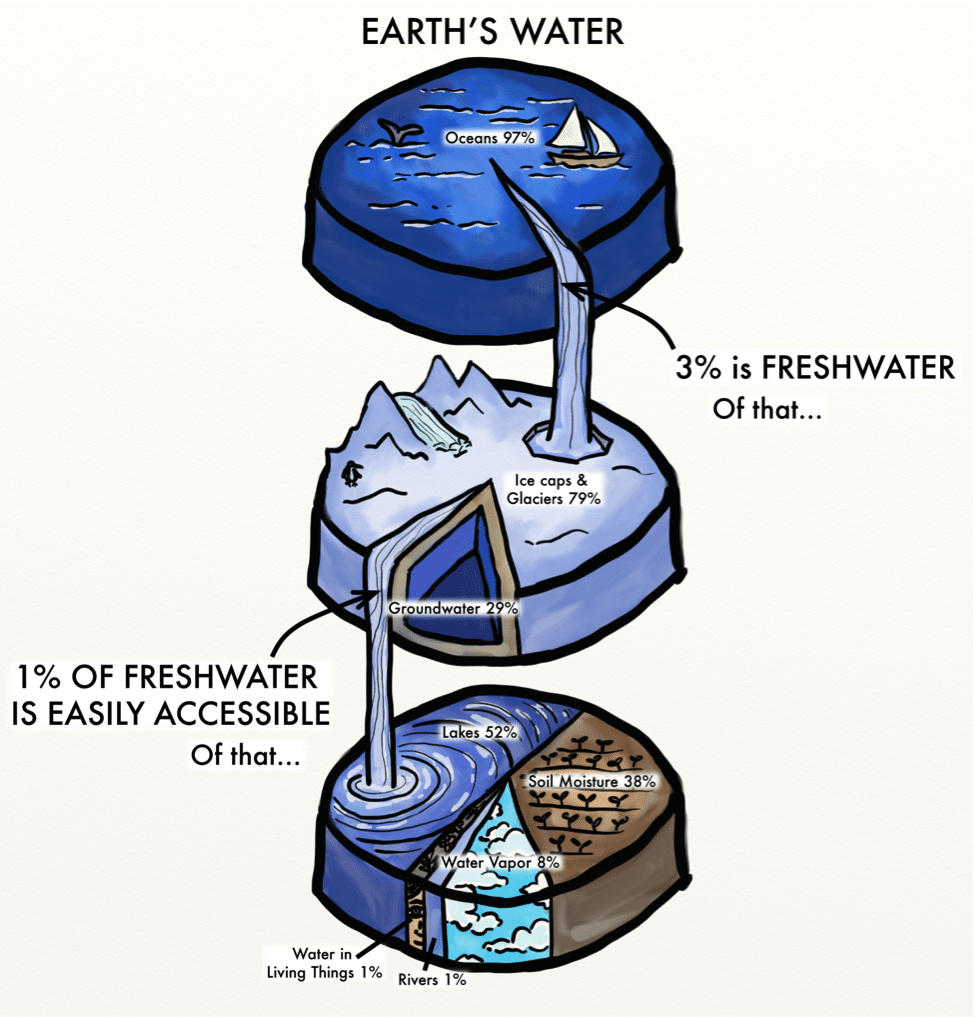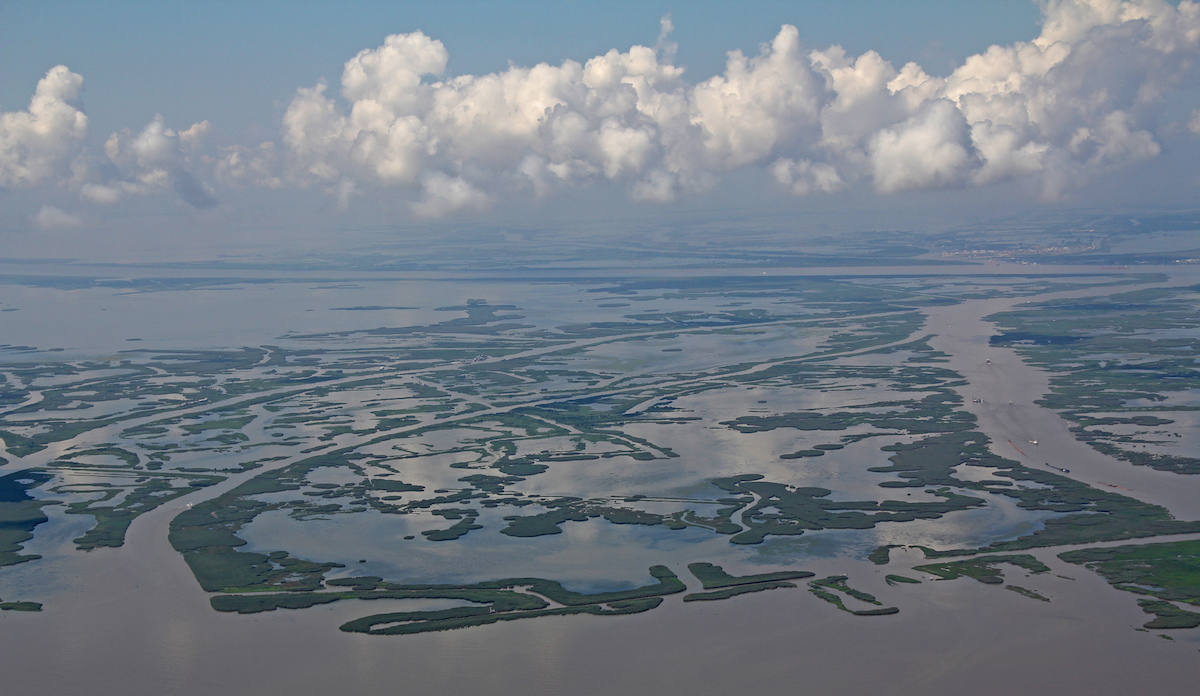We all love water. There is no better way to say it. Water plays a critical role in the environment; nearly every organism is made mainly of water and needs water to survive. For most organisms, fresh water is required for consumption. However, over 97% of water is salt water, and it is stored in oceans and seas. Of the remaining 3%, 2% is stored in glaciers and mountain ranges. Only 1% of all water on Earth is readily available for human consumption.

We need to learn to be careful with the fresh water that we have available. Although the amount of water on Earth will never change, the distribution of water is changing every day. As ice caps and glaciers melt, freshwater is converted into saltwater in the ocean. This is a direct result of global warming. As our climate becomes warmer and warmer every year, we lose more and more fresh water to the oceans. As the oceans’ water levels rise, more fresh water is exposed to salt water. Thankfully there is a way to convert salt water into fresh water. However, this technology is not yet convenient and uses a lot of energy. What have we learned in the past? The more energy that is needed, the more carbon is in the atmosphere. More carbon in the atmosphere leads to the temperature rising. The temperature increasing leads to additional fresh water turning into salt water in the oceans.
Another important aspect of water is that it shapes our environment. Water does not run smoothly along the surface of the Earth. It pushes and pulls dirt, rock, sand, and anything else it can with it. This is the process of erosion. However, the process of erosion is being altered by humans. One way it is being modified is through urbanization. Water flow is generally controlled within and near cities, not allowing it to flow as it naturally would. It is also being altered in rural areas, such as the midwest. Trees are cut down in areas with lots of farms to make room for planting crops. However, trees act as water sponges and anchor the ground underneath them, preventing erosion. With fewer trees, there is more room for water to run and nothing to prevent the soil from being lifted up and carried with it. This leads to a significant, unnatural movement of sediment, which you can easily see at the mouth of the Mississippi River on Google Earth.

Over the summer, I went to Iceland with my family where I was able to visit one of the world’s largest glaciers. The rate at which it is melting is terrifying, and all that water flows straight out to the ocean where it gets contaminated with salt. Access to fresh water will be one of the most prominent issues that climate change will bring to us in the near future, and we need to be prepared to combat it. Hopefully, more research will be done on removing salt from seawater to ensure we won’t have to worry about this as much.
While it is easy for me to see that only 1% of the Earth’s water is readily available to humans and not care, it is an important issue. When I was reading this post, I was wondering if we had a way of converting saltwater into fresh water, and it seems we do. However, you did a good job of explaining the energy downside to this. The increase in urbanization is definitely another issue of concern. While I’m sure we can filter most of the sentiment out of the water, the destruction it leaves in its wake is the real issue for concern. The erosion that occurs can be very harmful to the environment, and we should spend more time trying to prevent it. Keep up the good work!
Y0u bring up a lot of good points and although I knew that the water levels were rising, I never realized that it meant our limited supply of freshwater becoming saltwater. This is really alarming considering the fact that our population continues to grow and we are already facing water shortages in places like California. Although it is amazing we have started to develop technology to help this, I think that we won’t make a ton of progress until we crack down on our energy usage and switch to more sustainable net-zero carbon emission alternatives. Your post was very informative and I can’t wait to see what you talk about next!